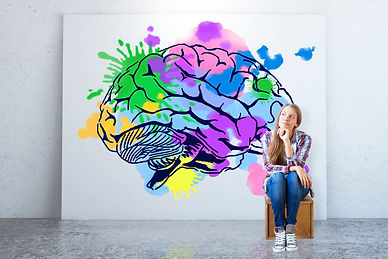
TPC-Mindset Reset!
TPC (Thought Process Conditioning) can be a highly effective tool for helping individuals with ADHD (Attention Deficit Hyperactivity Disorder) manage their symptoms and improve focus, emotional regulation, and mental clarity.
Here’s how TPC can benefit people with ADHD:
1. Managing Racing Thoughts (TMI)
People with ADHD often struggle with racing thoughts and mental clutter, known as TMI (Thoughts and Mental Images) in the TPC framework. TPC techniques like TPC 2D Observer help individuals become aware of these overwhelming thought patterns, allowing them to observe and identify the mental images (TMI) that are driving distraction, anxiety, or impulsivity. By identifying these patterns, individuals can manage and redirect them more effectively.
2. Building Focus and Mental Clarity
Through TPC Deep State, a technique that encourages deep focus and mental clarity similar to meditation, individuals with ADHD can train their minds to maintain attention on tasks for longer periods. Deep State helps reduce mental restlessness and hyperactivity by allowing the person to become familiar with their mental processes, leading to better focus and a calmer mindset.
3. Strengthening Emotional Regulation
Emotional regulation is a common challenge for individuals with ADHD. TPC’s Perception and Projection techniques teach individuals how their mental images (TMI) shape their emotions. By using TPC to replace negative or disruptive mental images with positive, calming ones, individuals can better manage emotional fluctuations, frustration, or impulsive reactions.
4. Creating Positive Routines
For people with ADHD, establishing and maintaining routines can be difficult. TPC’s structured approach—specifically the TPC-4P Process (Process, Perception, Project, Produce)—provides a cognitive framework for developing positive routines. By conditioning the mind to perceive tasks and goals through a positive, anchored mental image,
individuals can more effectively stick to routines and productive habits.
5. Anchoring Mental Imagery for Better Self-Control
TPC Anchor Imagery helps individuals with ADHD anchor positive mental images that they can recall in moments of distraction or impulsivity. This technique provides a mental “anchor” to stabilize emotions and focus, helping individuals regain control of their thoughts and behaviours more quickly.
6. Improving Mindset through TPC Daily
TPC Daily techniques, which involve resetting the mind and practising positive mental conditioning regularly, can help individuals with ADHD stay on track and maintain a proactive mindset. Daily use of tools like TPC Mindset Reset ensures consistent practice of mental clarity, focus, and emotional management, which can mitigate the challenges of ADHD over time.
7. Customizing Techniques for ADHD Symptoms
Since ADHD presents differently for each individual, TPC can be customized to address specific symptoms, such as hyperactivity, inattention, or impulsivity. TPC can help individuals develop personalized strategies to overcome their unique challenges by identifying the specific TMI patterns tied to these symptoms.
In summary, TPC helps individuals with ADHD by offering tools to manage their mental processes, improve focus, regulate emotions, establish routines, and strengthen self-control through positive mental conditioning. With consistent practice, TPC provides ADHD individuals the cognitive structure they need to thrive.

.jpg)